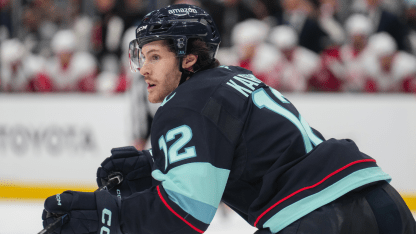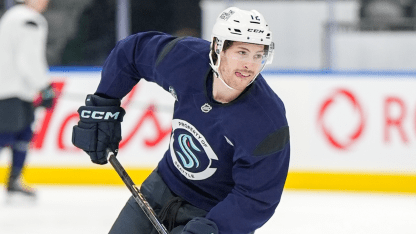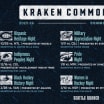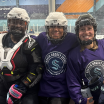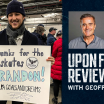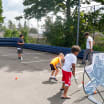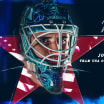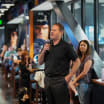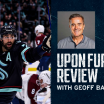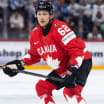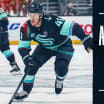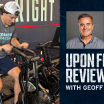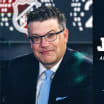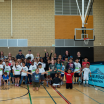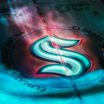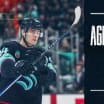Ahead of his third full season with the Kraken, depth forward Tye Kartye spent the summer in Toronto working out at the facility of hockey performance training expert and former NHLer Gary Roberts. That work was augmented by an important cross-country trip to work in B.C. with Justin Rai, the Kraken’s newly appointed head of player strategy. Kartye has been keenly focused on achieving one overarching result in his summer training.
“I’m trying to get faster,” said Kartye by phone this week. “The game's super-fast. I am looking to improve my pace to help with different areas of my game, including on the penalty kill and continuing to be effective on the forecheck. Gaining a bit of speed is the goal.”
While accelerating up ice is what most fans consider speed for a hockey player, a key component of Kartye’s summer training has been achieving more “quickness off the start,” said Kraken general manager Jason Botterill.
“The NHL happens just that much faster,” said Botterill this week. “Tye knows this past season didn’t go as well as hoped. But when he faces a challenge, we know he doesn’t back down from it. He attacks it. He’s always worked hard in the workout room and paid close attention to his nutrition, taking care of his body. We wanted him to get faster on those first couple of strides [when starting or changing direction].”
Observing, Competing, Improving
Part of Kartye’s work with Roberts alongside a multitude of NHL players (including the likes of Connor McDavid and Leon Draisaitl) comes as no surprise: “A lot of sprinting.” Plus Kartye, along with Seattle teammates and Toronto area residents Vince Dunn, Shane Wright and Ryan Winterton, took to the ice to complement and power-boost his pursuit of being faster on skates. The entire environment benefits the 24-year-old forward, who has already played 140 NHL regular-season games plus another 10 postseason contests despite being undrafted. “It's been great,” said Kartye about joining the Gary Roberts summer group for the first time. “Everyone is super knowledgeable. Obviously, there are some of the best players working out here. Surrounded by elite players, it only forces you to get better. It’s really helped me to be around some of these top guys to see how they work and skate. You see what they do every day to prepare for the season, plus I get to compete with them on the ice.” While Kartye carried over his physical brand of play from his rookie NHL season into Year 2 (he was second on the team in hits despite playing just 63 games), his 2024-25 scoring production and time on ice dipped.
“Obviously, last season was disappointing for everybody, and there are a lot of areas to improve,” said Kartye. “Along with speed, there are different areas within the game I want to be better at, such as being more consistent offensively, using my shot more and providing the team with that depth scoring. I also want to carve out a role on the penalty kill so I can make a difference there.”

